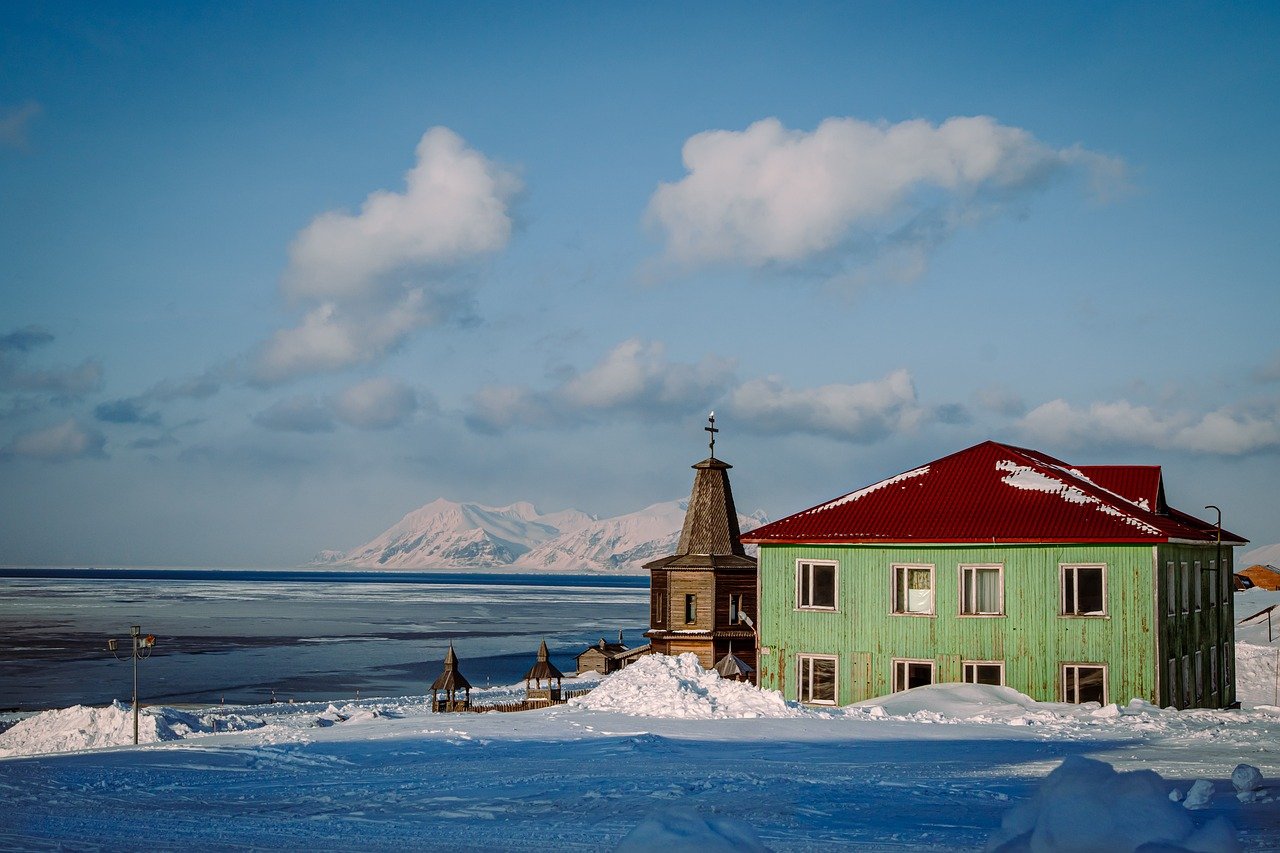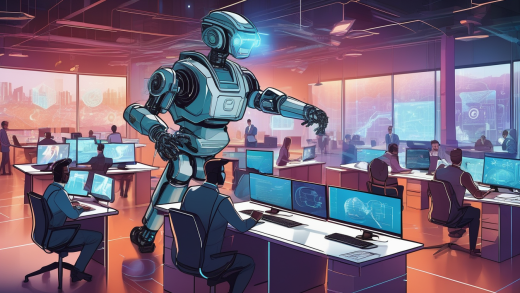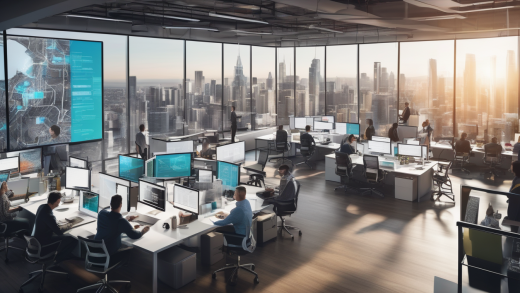Global warming is not just a buzzword; it’s a reality that is reshaping our planet, particularly in the Arctic region. The alarming rise in Earth’s average temperature, primarily driven by human activities such as burning fossil fuels and deforestation, is causing unprecedented ice melt. With every passing year, we witness the devastating effects of climate change, and the Arctic serves as a stark example of what lies ahead if we don’t take action.
As we delve into the science behind global warming, it’s essential to understand the role of greenhouse gases. These gases trap heat in the atmosphere, leading to a gradual increase in temperatures. The Arctic, being one of the most sensitive areas to climate change, is experiencing this phenomenon more acutely than other regions. Did you know that the Arctic is warming at twice the global average rate? This rapid change is not just a statistic; it translates to real-world consequences, such as the alarming decline in ice cover.
The consequences of this ice melt extend far beyond the Arctic. As the ice retreats, it disrupts local ecosystems and threatens wildlife that depend on these icy habitats. For instance, polar bears, which rely on sea ice for hunting seals, are finding it increasingly difficult to survive. The melting ice also affects indigenous communities, who depend on stable ice conditions for their traditional lifestyles.
Furthermore, the implications for global climate are profound. The melting ice contributes to rising sea levels, which threaten coastal communities worldwide. In fact, scientists predict that if current trends continue, we could see sea levels rise by over a metre by the end of the century. This would have catastrophic effects on millions of people living in low-lying areas.
To summarise, the record ice melt in the Arctic is not merely an environmental issue; it’s a wake-up call for humanity. We must acknowledge the interconnectedness of our actions and their impacts on the planet. As we look toward the future, it’s crucial that we come together to combat climate change and protect our fragile ecosystems.
Understanding Global Warming
Global warming is not just a buzzword; it’s a pressing reality that affects us all. It refers to the long-term increase in Earth’s average temperature, primarily driven by human activities. But what exactly causes this phenomenon? The answer lies in the greenhouse gases we emit into the atmosphere. These gases trap heat, creating a blanket effect that warms the planet.
One of the main contributors to global warming is the burning of fossil fuels, such as coal, oil, and natural gas. When we power our homes, drive our cars, and run our factories, we’re releasing carbon dioxide (CO2) and other greenhouse gases into the air. According to the Intergovernmental Panel on Climate Change (IPCC), these emissions have increased dramatically since the Industrial Revolution, leading to a rise in global temperatures.
Other factors include deforestation and industrial processes. When forests are cut down, not only do we lose vital carbon sinks, but the act of clearing land also releases stored carbon into the atmosphere. Additionally, agricultural practices contribute to global warming through methane emissions from livestock and rice production.
To understand the full scope of global warming, we must consider its effects on our planet. These include:
- Increased frequency of extreme weather events
- Rising sea levels due to melting ice caps
- Disruption of ecosystems and loss of biodiversity
As we delve deeper into the implications of global warming, it’s crucial to recognise that the choices we make today will shape the future of our planet. The time for action is now, and understanding the causes of global warming is the first step towards a sustainable future.
| Greenhouse Gas | Source | Impact |
|---|---|---|
| Carbon Dioxide (CO2) | Fossil fuels, deforestation | Major contributor to climate change |
| Methane (CH4) | Agriculture, landfills | More potent than CO2 in trapping heat |
| Nitrous Oxide (N2O) | Agricultural practices | Contributes to ozone depletion |

The Impact on Arctic Ice
The Arctic region is currently facing a crisis that is as alarming as it is profound. With temperatures soaring to unprecedented levels, the ice that blankets this frozen expanse is melting at an astonishing rate. This is not just a minor environmental shift; it’s a **catastrophic change** that has far-reaching implications for our planet. Scientists estimate that Arctic sea ice has shrunk by about **40%** since the late 1970s, a staggering statistic that highlights the urgency of the situation.
As the ice melts, it reveals darker ocean waters, which absorb more sunlight and further accelerate warming—a classic example of a **feedback loop**. This phenomenon not only contributes to rising global temperatures but also disrupts local ecosystems. Marine life, including fish and plankton, relies on stable ice conditions for their survival, and as these habitats disappear, their populations are threatened.
Moreover, the impact of melting ice extends beyond the Arctic itself. Changes in the Arctic environment can alter **global weather patterns**. For instance, the loss of ice can lead to more extreme weather events in other parts of the world, such as heatwaves or heavy rainfall. This interconnectedness underscores the importance of understanding the Arctic’s role in the **global climate system**.
To illustrate the dramatic changes occurring, consider the following table that outlines the reduction in Arctic sea ice over the decades:
| Year | Average Arctic Sea Ice Extent (Million km²) |
|---|---|
| 1979 | 7.4 |
| 1999 | 6.2 |
| 2019 | 4.3 |
| 2023 | 3.8 |
In summary, the impact of melting Arctic ice is a **multifaceted issue** that threatens not only local wildlife and Indigenous communities but also poses significant risks to global climate stability. As we continue to witness these changes, it becomes increasingly clear that immediate action is necessary to mitigate the effects of climate change. For further reading on this critical topic, you can visit National Geographic.
Melting Sea Ice
The Arctic is witnessing a dramatic transformation as becomes a stark reality. With rising global temperatures, the extent of sea ice is diminishing at an alarming rate. This situation is not just a local concern; it has profound implications for the entire planet. As the ice melts, it exposes darker ocean waters that absorb more heat, creating a vicious cycle that accelerates further melting. Can you imagine the Arctic, once a frozen fortress, turning into a vast expanse of open water? This shift is not only shocking but also detrimental to marine ecosystems.
One of the most pressing issues linked to melting sea ice is its effect on marine life. Species that rely on ice for hunting and breeding are facing existential threats. For instance, polar bears, often seen as the poster child for climate change, are struggling to find seals, their primary food source, as the ice they depend on shrinks. Additionally, the loss of ice impacts the entire food web, leading to a decline in fish populations, which affects not just wildlife but also human communities that rely on fishing.
Moreover, the implications extend beyond marine life. The melting ice contributes to altering global weather patterns. As the Arctic warms, it disrupts the jet stream, leading to unpredictable weather in regions far from the poles. This can result in extreme weather events, such as prolonged droughts or heavy rainfall, affecting agriculture and water supply across the globe.
To better understand the impact of melting sea ice, consider the following table that outlines key statistics:
| Year | Extent of Sea Ice (Million km²) | Temperature Increase (°C) |
|---|---|---|
| 1980 | 7.7 | 0.0 |
| 2000 | 6.1 | 0.5 |
| 2020 | 3.7 | 1.2 |
In conclusion, the melting of sea ice is a critical issue that warrants immediate attention. As we witness these changes, it’s essential to recognise our role in combating climate change. Are we ready to take action? The future of our planet may depend on it. For further reading on this topic, you can visit National Geographic.
Effects on Wildlife
The melting ice in the Arctic is not just a statistic; it’s a dire reality that threatens the very fabric of life in this fragile ecosystem. As the ice retreats, it disrupts the delicate balance that many species have relied upon for survival. For instance, polar bears, often seen as the iconic symbol of the Arctic, are facing an uphill battle. Their hunting grounds are disappearing, making it increasingly difficult for them to find seals, their primary food source. Without adequate food, these majestic creatures are struggling to maintain their health and reproduce.
Moreover, the loss of ice habitat doesn’t only affect polar bears. A variety of marine species are also feeling the heat. The diminishing ice cover alters the habitat for seals, walruses, and even fish populations, which rely on the ice for breeding and protection from predators. As the ice melts, these animals are forced to adapt to new conditions, often with disastrous consequences. For example, as seals lose their breeding grounds, their population numbers decline, leading to a ripple effect throughout the food chain.
To illustrate the impact on wildlife, consider the following table that outlines some key species affected by Arctic ice melt:
| Species | Impact of Ice Melt |
|---|---|
| Polar Bears | Reduced hunting grounds, leading to malnutrition |
| Seals | Loss of breeding ice, decreasing populations |
| Walruses | Disruption of resting areas, increased competition for resources |
| Arctic Cod | Changing habitat, affecting breeding cycles |
In addition to these immediate impacts, the changes in wildlife populations could have long-term effects on the ecosystem. As species begin to vanish or migrate, the entire food web may shift, leading to unforeseen consequences. This situation raises an important question: how can we protect these vulnerable species in the face of such rapid environmental change? The answer lies in a combination of conservation efforts, policy changes, and global awareness.
Ultimately, the fate of Arctic wildlife is intertwined with the health of our planet. As we witness these changes, it becomes increasingly crucial to advocate for measures that mitigate climate change and preserve the unique biodiversity of the Arctic region. For more information on how to help, visit World Wildlife Fund.
Impact on Indigenous Communities
The melting ice in the Arctic is not just an environmental issue; it is a profound challenge for Indigenous communities who have thrived in these regions for centuries. As the ice retreats, it disrupts traditional hunting grounds and alters the migratory patterns of animals, which are vital for the survival of these communities. Imagine living in a place where your way of life is intricately tied to the land and ice, only to see it change before your eyes. This is the reality for many Indigenous peoples.
For instance, traditional practices that rely on stable ice conditions, such as seal hunting, are becoming increasingly precarious. The loss of ice habitat means that many species, including seals and polar bears, are forced to adapt or relocate, which in turn affects the food sources available to Indigenous hunters. As a result, these communities are facing not only a loss of food security but also a disconnection from their cultural heritage.
Moreover, the changes in the environment lead to a shift in the social fabric of these communities. With fewer opportunities for traditional hunting, there is a growing reliance on store-bought food, which is often more expensive and less nutritious. This shift can lead to a loss of traditional knowledge and skills, as younger generations may not learn the same hunting and survival techniques that their ancestors practiced.
To illustrate the impact, consider the following table that highlights some of the key challenges faced by Indigenous communities due to ice melt:
| Challenges | Implications |
|---|---|
| Disrupted Hunting | Loss of food security and traditional practices |
| Increased Reliance on Store-Bought Food | Higher costs and nutritional deficiencies |
| Cultural Disconnection | Loss of traditional knowledge and identity |
In conclusion, the impact of global warming on Indigenous communities is a multifaceted issue that extends beyond environmental concerns. It affects their livelihoods, culture, and identity, making it crucial to address these challenges in discussions about climate change. For further insights on the intersection of climate change and Indigenous rights, you can visit UN Indigenous Peoples.
Glacier Retreat
The phenomenon of in the Arctic is not just a distant concern; it’s a stark reality that affects all of us. As global temperatures rise, glaciers, which are essentially rivers of ice, are melting at alarming rates. This melting is primarily driven by human-induced climate change, leading to significant environmental shifts. Did you know that the Arctic is warming over twice as fast as the rest of the planet? This rapid change poses serious threats to both local ecosystems and global sea levels.
Glacial melt contributes to rising sea levels, which can have catastrophic effects on coastal communities. For example, a study by the Intergovernmental Panel on Climate Change estimates that sea levels could rise by up to 1.1 meters by the end of the century if current trends continue. This rise is not just a number; it translates to flooding in cities, loss of land, and displacement of populations.
Furthermore, the melting glaciers are releasing freshwater into the oceans, which disrupts marine ecosystems. The influx of freshwater alters the salinity levels, affecting fish populations and the broader food chain. As a result, species that depend on stable conditions are facing challenges that threaten their survival.
To put things into perspective, here’s a quick look at the alarming statistics surrounding glacier retreat:
| Year | Estimated Glacier Mass Loss (Gigatonnes) |
|---|---|
| 2000 | 250 |
| 2010 | 400 |
| 2020 | 600 |
In summary, the retreat of glaciers is a clear indicator of the broader impacts of climate change. It’s a reminder that our actions today will shape the world of tomorrow. So, what can we do about it? Awareness and advocacy are vital. By understanding the implications of glacier melt, we can better support policies and initiatives aimed at combating climate change.
Consequences for Global Climate
As the Arctic ice continues to melt at an alarming rate, the consequences for global climate are profound and far-reaching. The melting ice not only contributes to rising sea levels but also disrupts established weather patterns across the globe. This phenomenon raises a crucial question: how does a change in one region affect the entire planet?
One of the most significant impacts of Arctic ice melt is the rise in sea levels. According to recent studies, the melting of Greenland’s ice sheet alone could contribute to a sea level rise of about 7.4 meters if it were to melt completely. This poses a dire threat to coastal communities worldwide, leading to increased flooding, erosion, and habitat loss. The table below illustrates potential sea level rise scenarios based on current trends:
| Year | Projected Sea Level Rise (cm) |
|---|---|
| 2025 | 15 |
| 2050 | 30 |
| 2100 | 100 |
Moreover, the melting ice creates feedback loops that further exacerbate global warming. As ice melts, it exposes darker ocean water, which absorbs more sunlight and increases temperatures. This cycle can lead to even more ice melt, creating a vicious cycle that is hard to break.
Additionally, the loss of Arctic ice affects ocean currents and weather systems. For instance, the Gulf Stream is influenced by the temperature and salinity of ocean waters, which are altered by melting ice. This can lead to unpredictable weather patterns, such as extreme winters in Europe and increased storm intensity in the Americas.
In conclusion, the consequences of Arctic ice melt extend beyond the polar region, impacting global climate systems, sea levels, and weather patterns. As we continue to witness these changes, it is imperative to understand the interconnectedness of our planet’s ecosystems and the urgent need for action. For more information on climate change and its global effects, you can visit the Intergovernmental Panel on Climate Change.
Rising Sea Levels
As the Arctic ice melts at an unprecedented rate, one of the most alarming consequences is the rise in sea levels. This phenomenon is not just a distant concern; it is a reality that coastal communities around the world are beginning to face. The melting of both sea ice and glaciers contributes significantly to this rise, leading to a cascade of environmental and social challenges.
To put things into perspective, consider the following statistics:
| Year | Global Sea Level Rise (mm) |
|---|---|
| 1993 | 0.0 |
| 2000 | 3.1 |
| 2010 | 8.9 |
| 2020 | 20.6 |
This table illustrates the alarming acceleration of sea level rise over the past few decades. With projections suggesting that levels could rise by as much as 1.1 metres by 2100, the implications for coastal cities are profound. Imagine vibrant metropolises like New York, Miami, and Bangkok grappling with the threat of inundation. Not only does this impact infrastructure, but it also poses risks to freshwater supplies and ecosystems that rely on stable coastlines.
Moreover, rising sea levels can lead to increased flooding, erosion, and saltwater intrusion into freshwater systems. This creates a vicious cycle where communities are forced to adapt, often at great expense. In some cases, entire communities may even need to relocate, raising ethical and logistical questions about displacement and cultural preservation.
As we ponder these challenges, it’s crucial to recognise that the melting ice in the Arctic is not just a local issue; it is a global concern that demands immediate action. If we continue down this path without addressing the root causes of climate change, we may find ourselves facing an irreversible crisis.
For further reading on the implications of rising sea levels, check out National Geographic.
Feedback Loops
The phenomenon of in the context of global warming is both fascinating and alarming. Essentially, these loops occur when a change in the environment triggers a series of events that further exacerbate the initial change. In the Arctic, melting ice is a prime example of this process. As the ice melts, it exposes darker ocean water, which absorbs more sunlight and increases temperatures further, leading to even more ice melt. It’s a vicious cycle that seems to spiral out of control.
One of the most concerning aspects of these feedback loops is their potential to accelerate climate change on a global scale. When the Arctic ice melts, it not only contributes to rising sea levels but also affects ocean currents and weather patterns worldwide. For instance, warmer Arctic temperatures can disrupt the polar vortex, leading to extreme weather events in regions far from the Arctic. This interconnectedness highlights how localised changes can have global repercussions.
To illustrate the impact of these feedback loops, consider the following points:
- Albedo Effect: The loss of ice reduces the Earth’s albedo, or its ability to reflect sunlight. This results in more heat being absorbed, further warming the planet.
- Permafrost Thawing: As temperatures rise, permafrost begins to thaw, releasing stored greenhouse gases like methane, which is significantly more potent than CO2.
- Ocean Circulation Changes: The influx of freshwater from melting glaciers can disrupt ocean circulation patterns, impacting climate systems globally.
These feedback mechanisms create a scenario where the effects of climate change are not just additive but multiplicative, leading to a more rapid and severe impact on our planet. As we continue to witness the consequences of these feedback loops, it becomes increasingly clear that immediate action is essential to mitigate their effects and protect our global ecosystem.
For further reading on this topic, you can explore more at IPCC’s official website.
Frequently Asked Questions
- What is causing the ice melt in the Arctic?
The primary cause of ice melt in the Arctic is global warming, driven by human activities such as burning fossil fuels and deforestation. These actions increase greenhouse gas emissions, which trap heat in the atmosphere and lead to rising temperatures.
- How does melting sea ice affect marine life?
Melting sea ice disrupts the habitat for marine species like polar bears and seals, making it harder for them to find food and reproduce. As their habitats shrink, it can lead to declines in population and even extinction for some species.
- What are the implications of glacier retreat for sea levels?
As glaciers retreat, they contribute to rising sea levels, which poses a significant threat to coastal communities. This can lead to increased flooding, loss of land, and damage to ecosystems, making it a critical issue for many regions around the world.
- How do feedback loops impact global warming?
Feedback loops occur when melting ice reduces the Earth’s albedo effect, causing more heat to be absorbed and accelerating global warming. This creates a vicious cycle, leading to even more ice melt and further climate change.
- What challenges do Indigenous communities face due to ice melt?
Indigenous communities in the Arctic are experiencing significant challenges as their traditional lifestyles are impacted by changing environments. The melting ice affects their hunting grounds and cultural practices, threatening their way of life.



